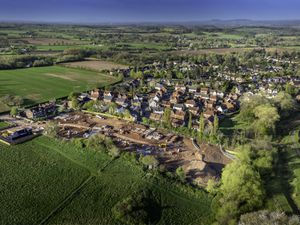Staffordshire museum brings home stark life in trenches - with video and gallery
It is the image that defines the Great War for many. The muddy, rat-ridden trenches that were under constant fire from the enemy.
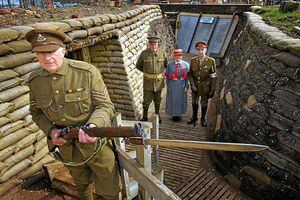
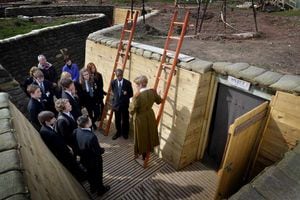
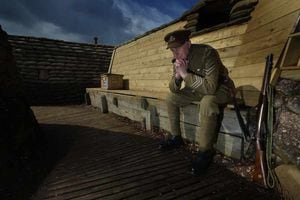
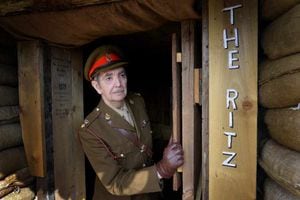
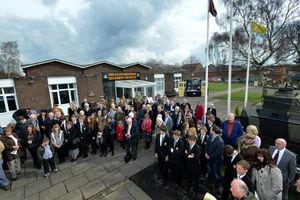
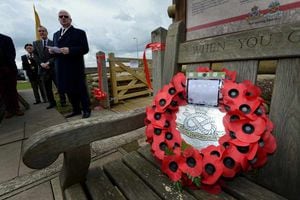
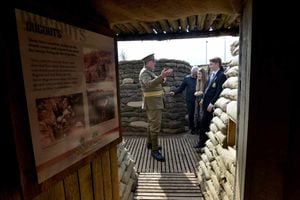
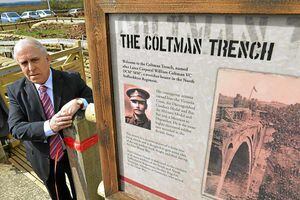
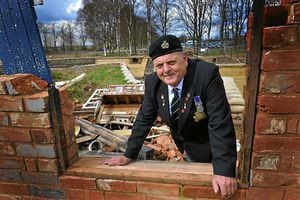

Now the hellish subterranean existence of men on the Western Front in the First World War has been recreated at the Staffordshire Regimental Museum in Whittington.
The whizz and crack of sniper bullets and the distant rumble of big guns was replayed through a sound system as the first visitors toured the 500ft replica of a period trench system.
The Coltman Trench, first launched 12 years ago, has been redesigned to more realistically evoke life at the Front.
It is believed to be the most sophisticated trench reconstruction outside London's Imperial War Museum's model.
Veterans, special visitors and schoolchildren gathered at the site yesterday to celebrate the official re-opening. The initiative has been entirely the work of dedicated museum volunteers who decided to update the communications trench, a favourite with visitors to the museum, to mark the centenary of the outbreak of the First World War.
Duck boards cover the ground and sandbags line the walls. There is a first-aid station filled with original Great War artefacts, an officers' dugout signposted The Ritz where visitors can sit surrounded by bunk-beds, family photographs and watch a video presentation on life in the trenches.
Original signage points the way to a tunnel that gives a feel for the conditions tendured by the brave men of the North and South Staffordshire Regiment as they tunnelled underground to reach the enemy trenches. The soldiers, many of them miners from Cannock, Rugeley and Hednesford, were renowned for their tunnelling prowess, being paid six times that of other soldiers for the particular risks they took.
A volunteer dressed in a turn-of-the-century nurse's uniform told students from King Edward VI School in Lichfield, who were on the first tour yesterday, that the soldiers on occasion inadvertently broke into enemy tunnels which led to hand-to-hand combat in the pitch darkness. Soldiers usually spent between six and 10 days at the Front at a time, always on the alert for deadly gas attacks in between mounting assaults on the German line.
Gas masks were not introduced until 1916 so that for the first two years of the war, the troops' only protection against poisonous gas was to soak their soft caps and handkerchiefs in urine and hold them to their faces.
Visitors are also shown funk holes, spaces dug into the sides of the trenches where two or three men could rest, and temporarily find respite from the often knee-high bog of trench mud. People exit via a model of a bombed-out French village with crumbling walls and the forgotten detritus of a home, incuding a piano, crockery and shoes, showing through the wreckage.
The trench system is dedicated to Staffordshire-born William Coltman, the most decorated soldier of the 1914-18 conflict, who was awarded two Military Medals, two Distinguished Conduct Medals and the Victoria Cross, the highest possible commendation for gallantry. The gardener, from Burton, was a Christian and, as such, refused to take another's life. Instead he served as a stretcher bearer, showing extraordinary courage and saving many lives.
Eighteen members of the Coltman family across three generations attended the ceremony. Among them was William Coltman's grandson, 68-year-old John Coltman, who said he remembered his courageous relative as a modest man who never talked of his war experiences. "I don't know what my grandfather would have thought of this. He was a humble and unassuming man, only 5ft 4in tall, who returned to his gardening, working for the council, when he returned from the war," said Mr Coltman, a retired insurance manager. "We learned about what he had done only after he had died because he never spoke of it. We are very proud of him. We honour his memory by preaching his message of peace and Christian love."
The ceremonial ribbon, was cut by Staffordshire Deputy Lieutenant Graham Stow. The museum is holding a series of commemorative events this year.


